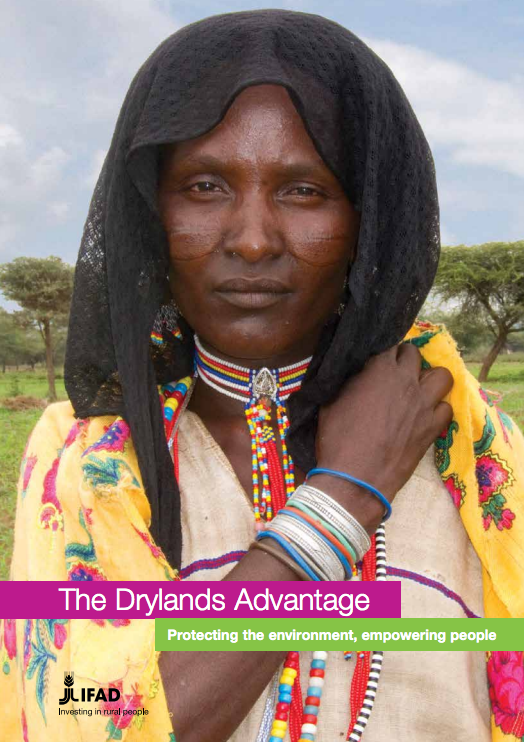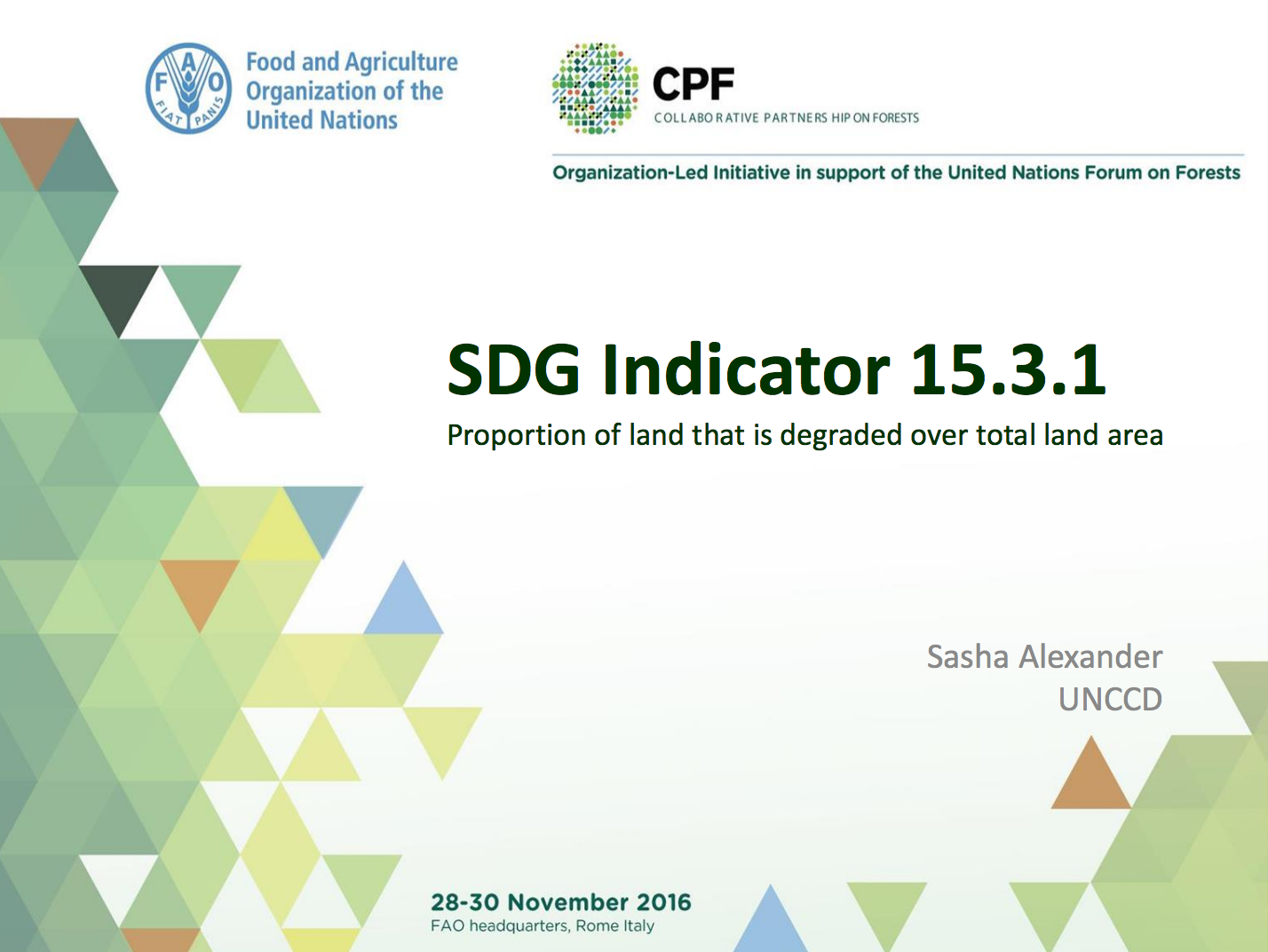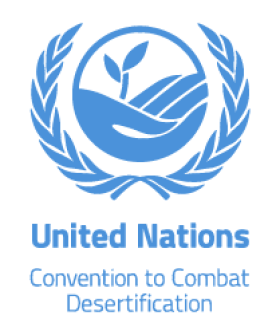
Proportion of land that is degraded over total land area
Last updated on 1 February 2022
This indicator is currently classified as Tier I. The United Nations Convention to Combat Desertification (UNCCD) is the Custodian agency for this indicator. Food and Agriculture Organization of the United Nations (FAO) and the United Nations Environment Programme (UNEP) are partner agencies.
Unit of measure: Proportion of land that is degraded over total land area (%)
Why is this indicator important?
Food production, extractive industries, or the expansion of infrastructure increase pressure on arable lands, pastures, forestry, and other essential areas. In turn, land degradation has negative effects on ecosystems, farm yields, and the quantity and quality of water resources. As a consequence, food insecurity may rise and facilitate migration and urbanization.
To assess the extent of land degradation is important for tracking progress towards voluntary Land Degradation Neutrality (LDN) targets and for the development of plans of action to redress degradation, including through the conservation, sustainable management, rehabilitation and restoration of land resources.
How is the indicator measured and monitored?
According to the metadata document, the indicator uses a binary classification (degraded or not degraded) drawing on the three sub-indicators that assess trends in land cover, in land productivity, and in carbon stocks above and below ground. Any significant decrease or negative change in one of the three is considered to compromise land degradation. Land degradation is defined the reduction or loss of the biological or economic productivity and complexity of rain fed cropland, irrigated cropland, or range, pasture, forest and woodlands resulting from a combination of pressures, including land use and management practices. (UNCCD 1994, Article 1).
Since 2018, data is collected every four years through UNCCD’s national reporting and review process. Data sources include databases, maps, reports provided by ministries or agencies along with national statistical offices, as well as remote sensing, such Earth Observation data sources, that are disaggregated to national level. The Good Practices Guidance for SDG Indicator 15.3.1, version 2.0 provides a detail overview on monitoring and computation. The main limitations include the availability of historical time series and the, as of yet, often limited national capacities to process, interpret, and validate geospatial data.
By Anne Hennings, peer-reviewed by UNCCD.
Official indicator data
The proportion of land that is degraded draws on three sub-indicators: Land productivity, land cover, and soil organic carbon.
* Select "year" below to see the most recent data for more countries.
Other related indicators on Land Portal
In addition to the official indicator data, the following indicators provide information concerning land under organic agriculture and the enforcement of land use restrictions in rural areas.
| Indicator | Min-Max Number of years |
Countries / Obs | Min / Max Value |
|---|---|---|---|
| Agricultural area certified organic | |||
| Agriculture area under organic agric. | |||
| Restrictions regarding rural land use are enforced |
Land degradation and the Sustainable Development Goals: Threats and potential remedies
The concern for the well-being of land is often directly related to one’s proximity to the land, be it physically, economically or culturally. Land is more precious if one’s livelihood depend on it immediately than if one is merely a visitor.
The Drylands Advantage: Protecting the environment, empowering people
Marrakech, 11 November 2016 – A new report launched today by the UN’s International Fund for Agricultural Development (IFAD) reveals the crucial role the world’s drylands play in buffering the negative impacts of climate change, land degradation and drought.
SDG Indicator 15.3.1 - Proportion of land that is degraded over total land area
Presentation by Sasha Alexander from the UNCCD about SDG Indicator 15.3.1 about the proportion of land that is degraded over total land area.
Achieving Land Degradation Neutrality at the country level
The twelfth session of the Conference of the Parties of the UNCCD (COP 12) agreed to integrate the sustainable development goals (SDGs) and target 15.3 on Land Degradation Neutrality (LDN) in particular, into the implementation of the Convention, stating
Paginering
The Economic Case for Landscape Restoration in Latin America
Join us for an engaging discussion around the economic benefits of restoring productivity to deforested and degraded lands in Latin America and the Caribbean.
Latin America and the Caribbean account for over 20 percent of the world’s degraded lands, with 300 million hectares of degraded forests and 350 million hectares now classified as deforested—an area almost double the size of Mexi
How Farmers in Africa are Restoring Degraded Lands and Enhancing Resilience
Join us for a live discussion with World Vision’s Tony Rinaudo, WRI’s Robert Winterbottom and other experts on Farmer Managed Natural Regeneration – a key strategy for restoring degraded lands, achieving food security, and enriching rural areas.
Throughout the developing world, huge tracts of farmland, grazing lands and forests have become degraded to the point they are barely producti
2016 World Day to Combat Desertification
Protect Earth. Restore Land. Engage People
Paginering
![]()

By 2030, combat desertification, restore degraded land and soil, including land affected by desertification, drought and floods, and strive to achieve a land degradation-neutral world
Indicator details
The Indicator is conceptually clear, has an internationally established and available methodology and standards, and that data is regularly produced by countries for at least 50 per cent of countries and of the population in every region where the indicator is relevant.
Key dates:












